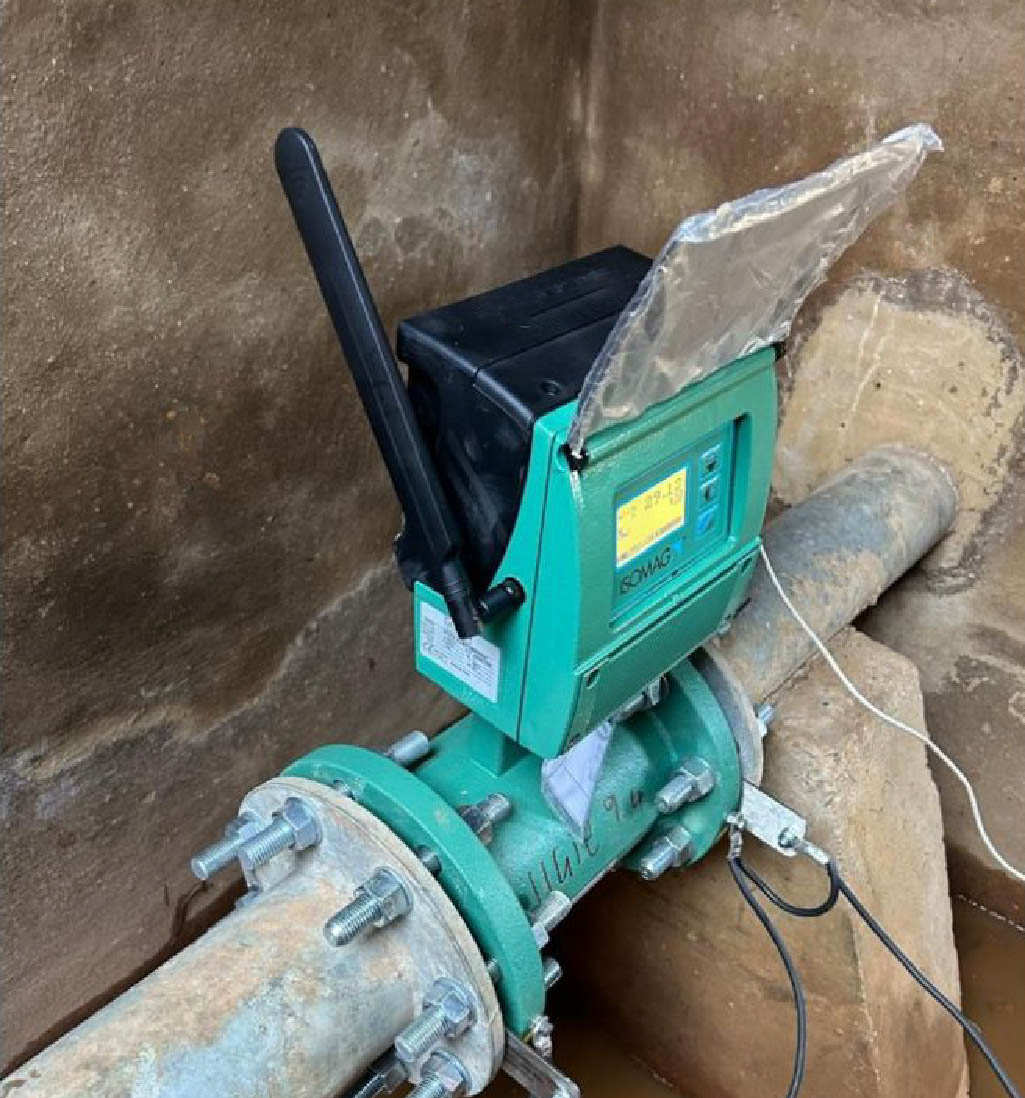FOR CONDUCTIVE LIQUIDS.
Electromagnetic flow measurement – The electromagnetic flowmeter is a widely used measuring instrument for water-based liquids that are electrically conductive*. For example drinking water, waste water, chemicals (dissolved in water), beer and slurries. Often referred to as “magnetic inductive flowmeters” or “magmeters”.
* Magmeters are not suitable suitable for hydrocarbons, distilled water, air, gases, gasoline and other oil products. Our ultrasonic flowmeters offer an interesting alternative for determining the flow rate of these substances.
MAGNETIC INDUCTION
Electromagnetic flowmeters operate accordingly Faraday’s Law: Based on electromagnetic induction, electrical voltage can be generated by moving a conductor in the magnetic field. The medium within the pipe (liquid or gas) functions as the conductor (σ> 5 μS). The higher the medium’s flow rate, the higher the voltage generated.
An electromagnetic flowmeter consists of a pipe with an electrically insulating layer of, for example, rubber, PTFE, PFA or ceramic on the inside. To generate a pulsed magnetic field within the measuring pipe, coils are fitted at the top and bottom. Electrodes / sensors are placed in the interior at 2 positions directly opposite each other, in such a way that this line is perpendicular to the magnetic field lines. When there is flow, a response voltage is measured on the sensors that is proportional to the speed of the medium.

U = v . B . D
U = measured voltage (electrodes / sensors)
v = velocity (of the medium)
B = magnetic field strength
D = distance between the electrodes / sensors (= pipe diameter)
If the magnetic field strength is constant (or known), the speed can be converted to the flow based on the (fixed) pipe diameter.

